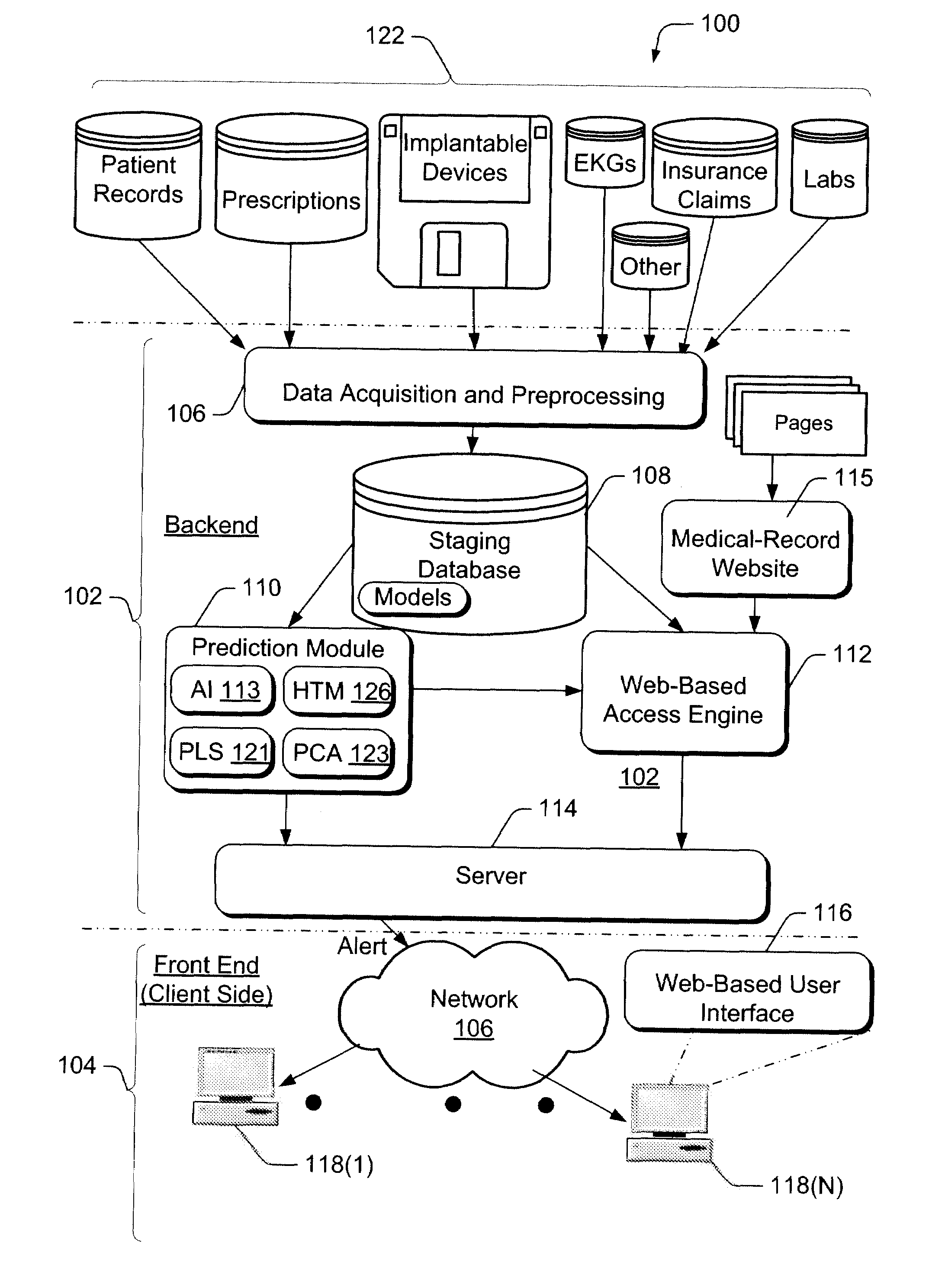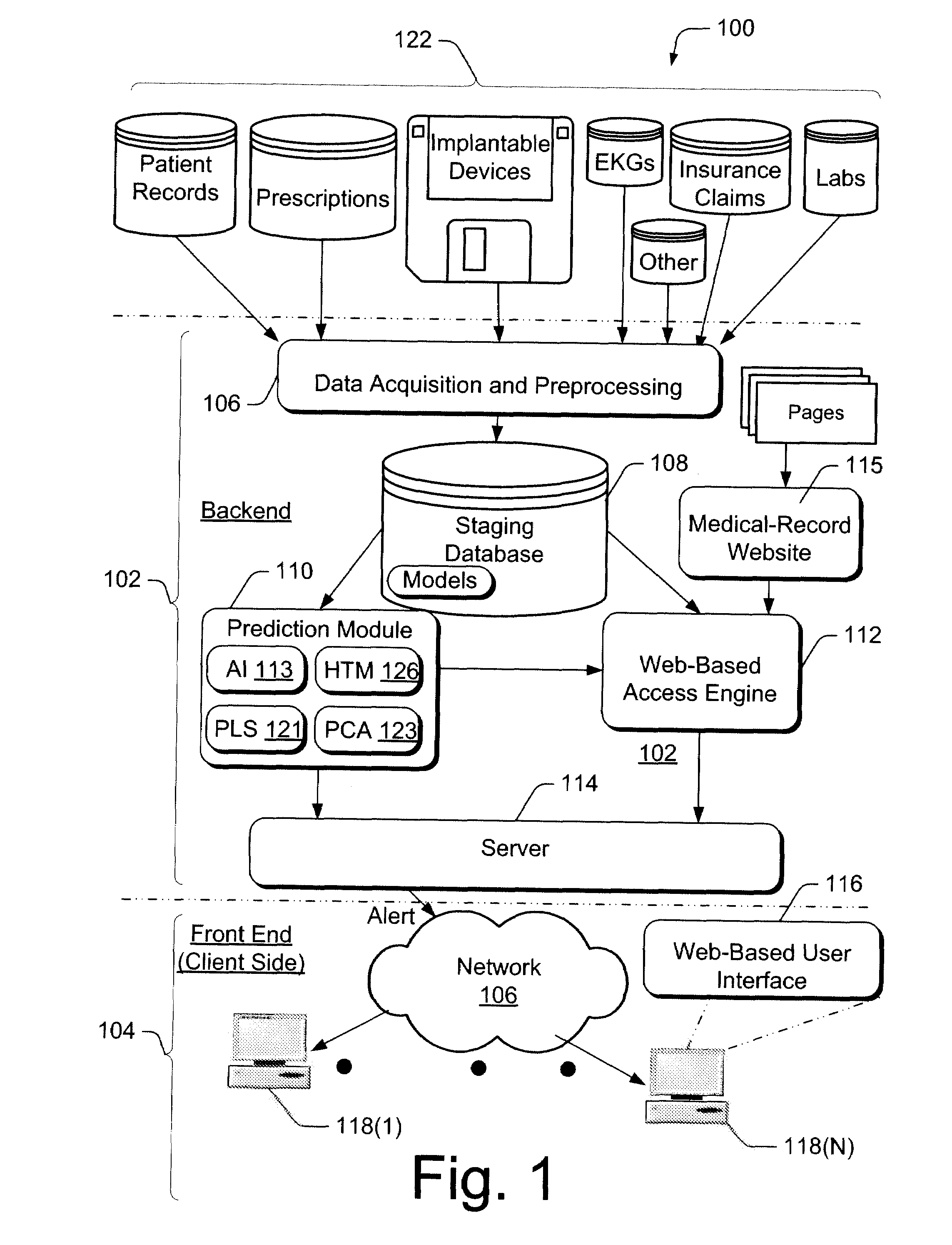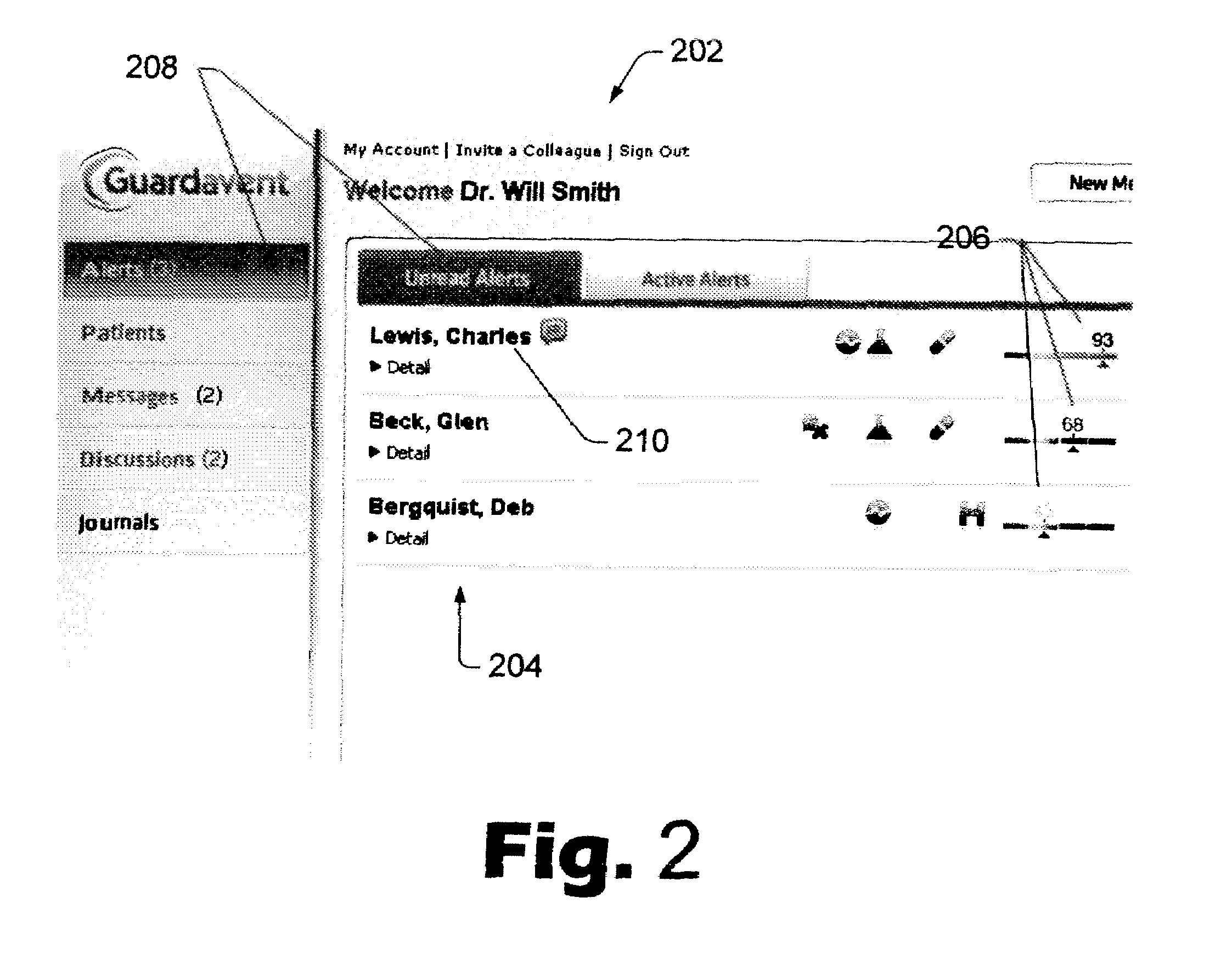Automated patient-management system for presenting patient-health data to clinicians, and methods of operation thereor
a patient-health data and automated technology, applied in the field of automated patient-health data presentation system for clinicians, can solve the problems of insufficient time-consuming and laborious clinicians, no real economic incentive to digitize data, and high cost of medical data processing systems, and achieve the effect of efficient reporting patient information
- Summary
- Abstract
- Description
- Claims
- Application Information
AI Technical Summary
Benefits of technology
Problems solved by technology
Method used
Image
Examples
Embodiment Construction
[0032]Reference herein to “one embodiment”, “an embodiment”, or similar formulations herein, means that a particular feature, structure, operation, or characteristic described in connection with the embodiment, is included in at least one embodiment of the present invention. Thus, the appearances of such phrases or formulations herein are not necessarily all referring to the same embodiment. Furthermore, various particular features, structures, operations, or characteristics may be combined in any suitable manner in one or more embodiments.
[0033]As used herein the following terms have the meaning that follows:
[0034]“Clinician” means a healthcare provider, such as, a physician, a doctor, a nurse, a physician's assistant, and other medical caregivers.
[0035]“Health-status information” means any information providing an indication of the present health condition of a patient, such as the patient's age, blood pressure, temperature, and physiologic state. Such information may also include...
PUM
 Login to View More
Login to View More Abstract
Description
Claims
Application Information
 Login to View More
Login to View More - R&D
- Intellectual Property
- Life Sciences
- Materials
- Tech Scout
- Unparalleled Data Quality
- Higher Quality Content
- 60% Fewer Hallucinations
Browse by: Latest US Patents, China's latest patents, Technical Efficacy Thesaurus, Application Domain, Technology Topic, Popular Technical Reports.
© 2025 PatSnap. All rights reserved.Legal|Privacy policy|Modern Slavery Act Transparency Statement|Sitemap|About US| Contact US: help@patsnap.com



